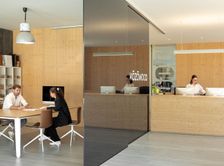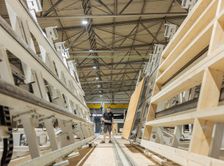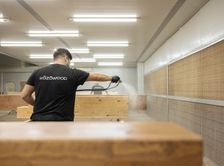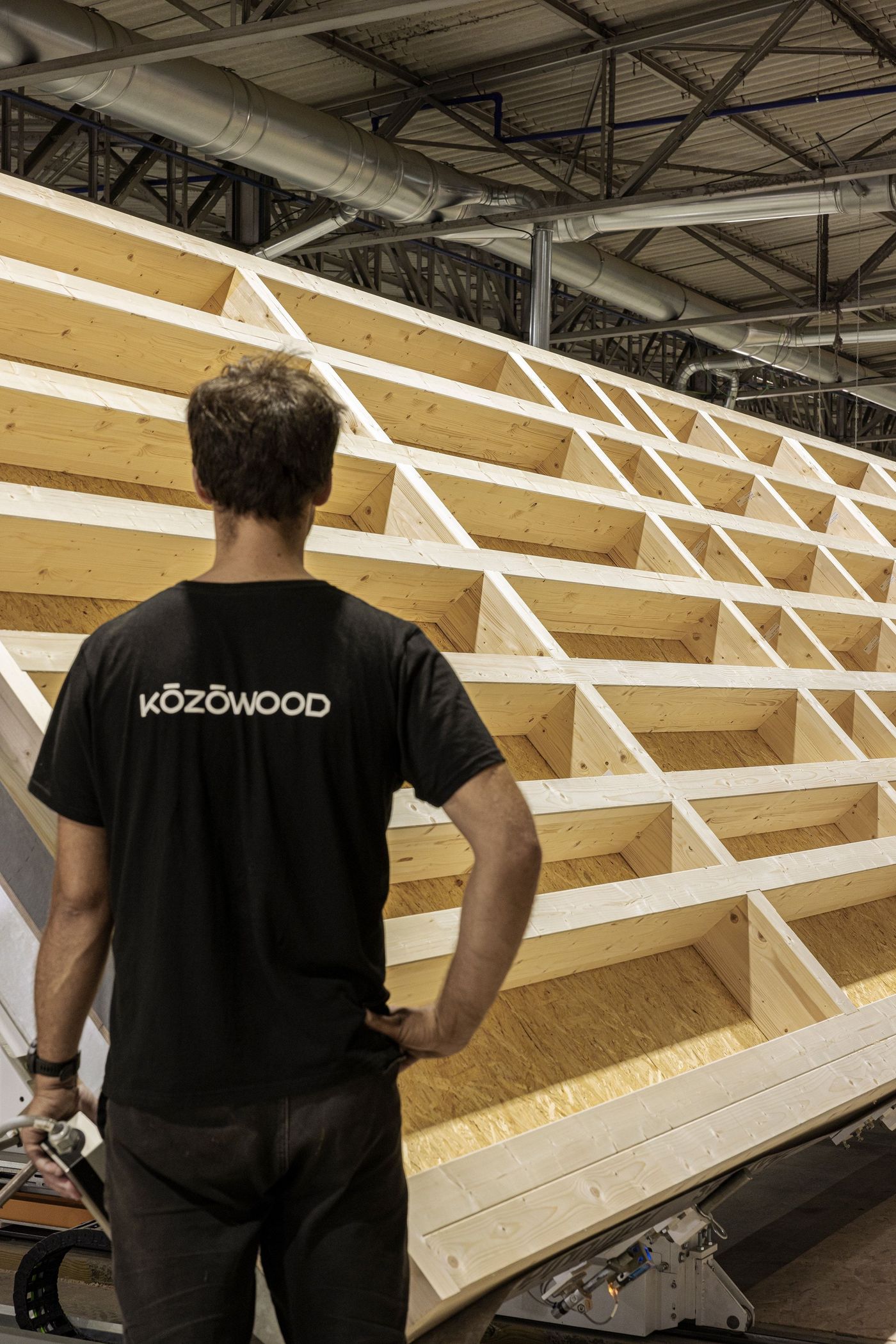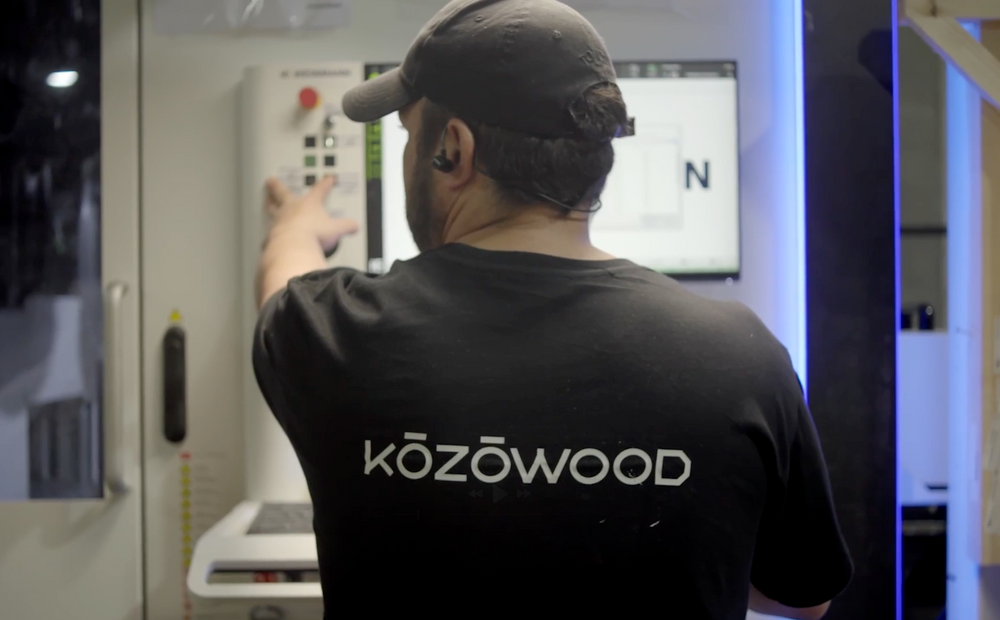(01)
The future of construction
The future of construction has taken root.
Let's dare to look to the future. The technology is already at our disposal so that we can re-imagine both the constructed environments and the housing models. At Kōzōwood, we are proud to be at the forefront of the mechanisms that promote and facilitate the adoption of wood as a central element of architectural thinking — for its environmental, biophilic and health benefits as well as the economic advantages it provides.
Wood has indeed been used for millennia in construction, although it has lost ground to other more industrialised materials in recent years. But if, on the one hand, its benefits had not been seriously studied until recently, on the other hand, the current proposal for its utilisation model is so innovative that it has become more desirable than ever. As we have come to understand it, wood is not just a resource but a matrix — and through cutting—edge engineering we have been able to emphasise its most desirable characteristics, increasing its strength, lightness, flexibility, safety and robustness. We haven't mentioned its charm, which will never need engineering or redesign. Anyone can attest to it upon first contact with a wooden building.
It is with this mission that Kōzōwood came into being, investing in the construction of the largest CLT production line in Portugal and surrounding itself with some of the best minds in the fields of architecture and engineering — who help us on a daily basis with the materialisation of a future where nature is prosperous and the human condition is privileged. This way, we guarantee high construction standards, smooth processes and a total commitment to sustainability.
We combine technologies, sustainable raw materials, and technological development, associating them with the growth of our society and utilizing construction systems that we have been developing in recent years.
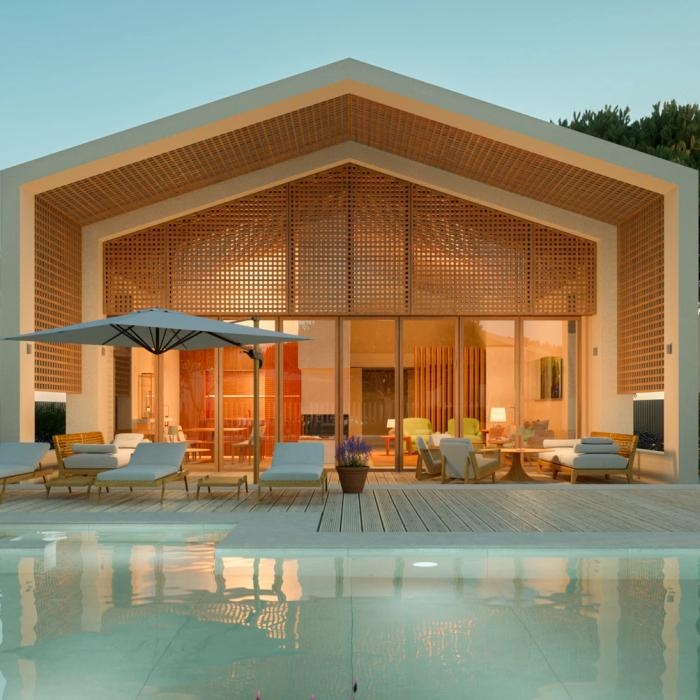
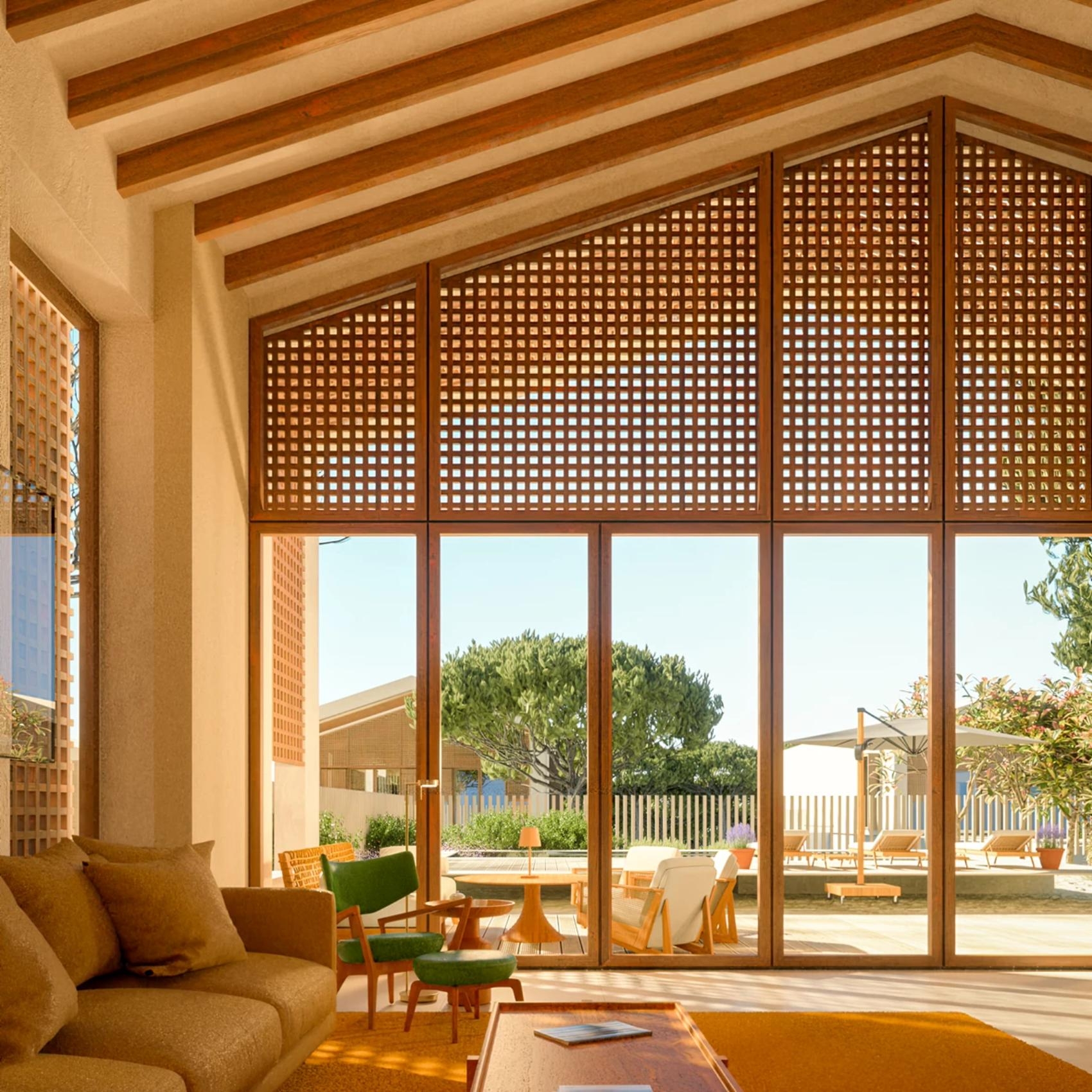
Muda Reserve
Image by Vanguard Properties
(02)
Kōzō World
Kōzōwood Industries
We know that the adoption of wood construction as a new paradigm in improving environmental relations will not happen instantly — which is why we have developed different solutions to speed up this transformation, thus serving different audiences and needs.
To date, Kōzōwood Industries — the parent brand and development centre for industrial hypotheses — has unveiled two strong arms: Kōzōwood and Ooty.
Through Kōzōwood, we respond to proposals for the construction of houses or buildings for a wide variety of applications. In this sphere, the project can come to us at the earliest ideation stage, almost finalised or at any stage between these two points. We will always ensure its materialisation with wood at its core and with teams specialising in all stages, from the first trace of the architectural concept to the carving of the last detail in the building already in place.
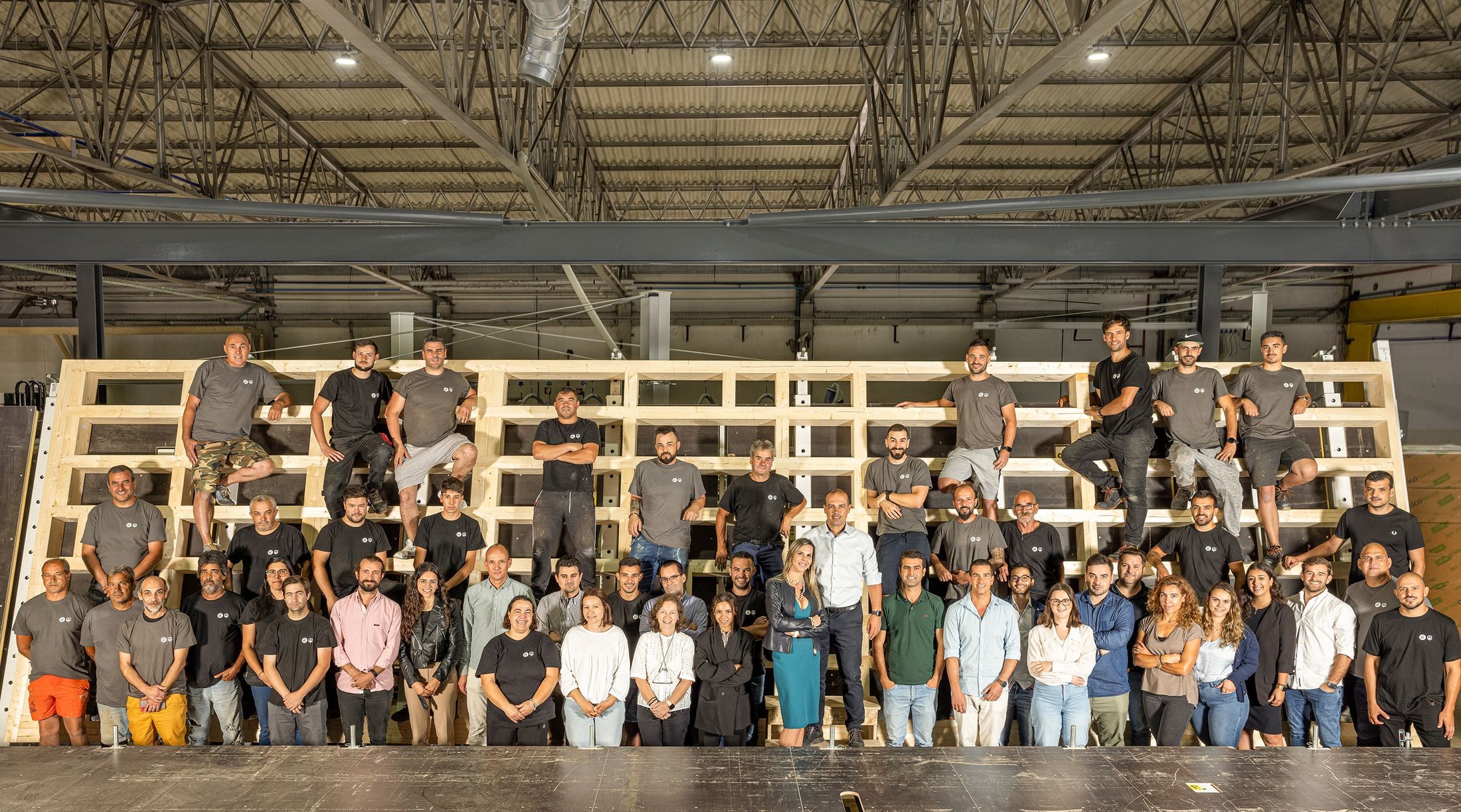
Kōzōwood Team
Image by Ivo Tavares
For cases that require even more streamlined implementations, whether temporary or permanent, we use Ooty solutions. Here, we use our pre—designed products — often modular — which can be effectively customised to meet a wide range of needs and visions.
Kōzōwood Industries also acts as a vehicle for commercialising Mass Timber products for implementation by other companies — thus contributing to the adoption of wood on an even wider scale.
(03)
Sustainability
In tune with nature
Sustainability cannot be considered a real motto if the effects of our actions are not measurable. Our actions — and ideally those of any industry — must have a positive impact. Opting for "less negative" solutions is not enough.
Adopting wood in construction is the responsible response to fulfil these points. It is a renewable and biodegradable resource whose very implementation promotes energy efficiency. Its natural ability to sequester carbon is combined with the strong incentive it gives to sustainable forestry practices, resulting in the fight against deforestation and the development of local economies. It also reduces waste and surpluses at all stages of any building's life cycle. All this without mechanically compromising their robustness, durability, safety and flexibility — and even serving as the basis for a tangible environmental philosophy, the proliferation of which begins with simple contact with this type of building.
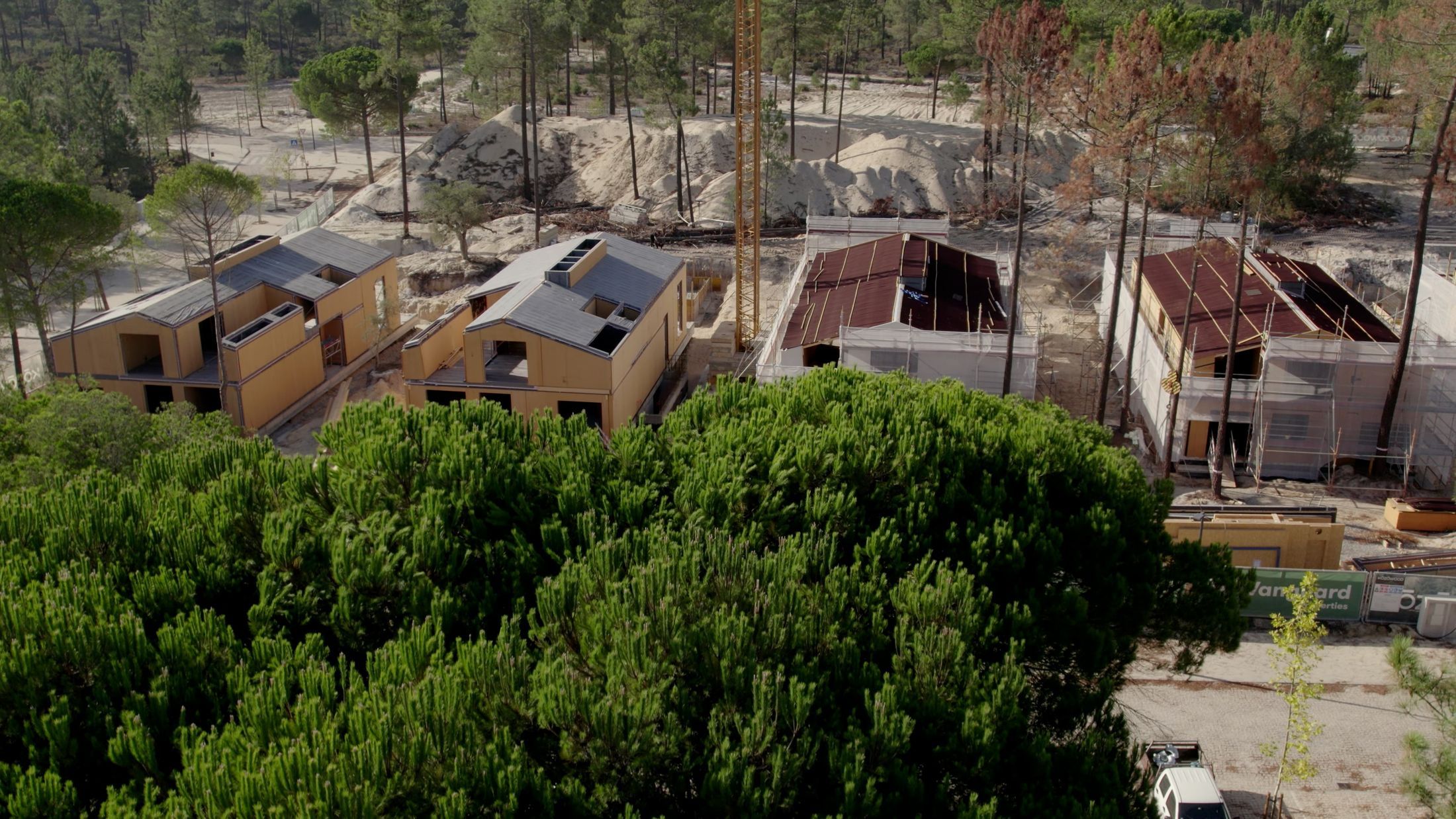
Muda Reserve
